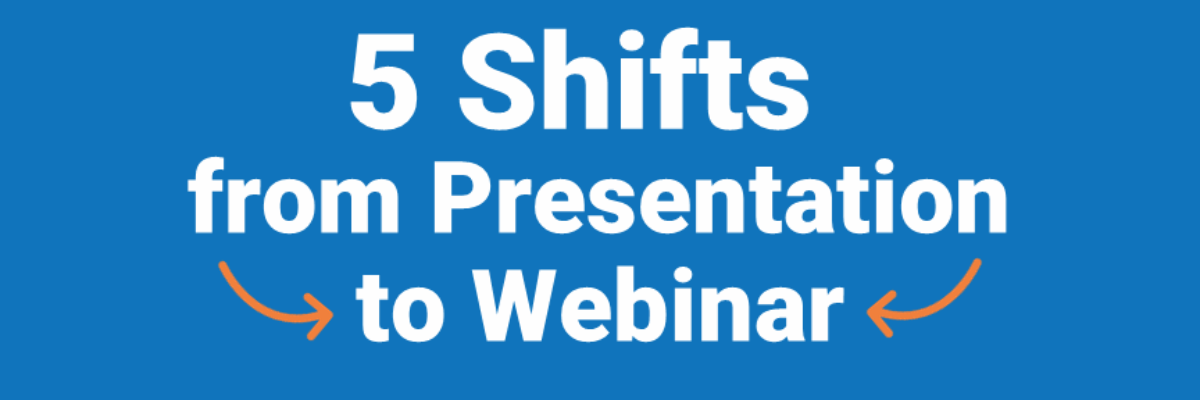5 Shifts from Presentation to Webinar
Well, here we are. In the Fall. At a time when, back in Spring, we might have thought we’d be gathering in person again. Now that awesome presentation you planned to give has gone virtual and you’re on Zoom instead of standing in real life in front of a crowd of interested people. What does this mean for your PowerPoint slides? Here are 5 shifts, plus an extra bonus shift if you are preparing a poster and not a presentation.
Shift 1: While People are Waiting
Turn on some music. Folks will be wondering whether their speakers are working and looking to test this before your presentation begins. Use for software’s functionality will play some classic jazz in the minutes leading up to the beginning of your presentation. You will not get questions about whether sound has begun. But if you leave things silent you will get questions from your audience, even though you are not at your start time yet, about weather sound is working. Seriously, in my last webinar people were commenting in the chat box about how much they appreciated my taste in music. In case you’re curious I was playing Mingus.
Add any preparation tips to your home slide. This way people will see how to prepare for your talk as they are waiting for you to begin. If they need to download any files or gather any materials, let them do so before you get started.

Shift 2: Adjust Your Font Sizes
I have been getting this question from many people in almost every workshop . You prepared a slide show with large file so that people in the back of the room would be able to see your slides. Now everyone is looking at your content at arms length. So what should your font sizes look like? I answered this question over on my Instagram.
Shift 3: Meaningful Interactivity
The rule of thumb for live presentations had been to change up the pace of things every 10 minutes. So 10 minutes of lecture, and then some change. Ask a question, dive into an activity, tell a joke. In webinar land my experience is that 10 minutes is now too long. Add more interactivity, perhaps every 5 minutes. But it has to be meaningful. Don’t toss up a poll that is useless or doesn’t add to the learning. Direct people to go to the chat box and answer an important question or provide their thoughts and insights. Make it worthwhile to interact.
Shift 4: Longer Breaks
In my live workshops, we would take a break every 90 minutes for perhaps 10 or 15 minutes to let people stretch their legs and find the washroom. Now that we all have work from home, we must consider that many of our attendees will have other people around them, such as children who need snacks or a diaper changed, such as parents who need snacks or a diaper changed. If we want our attendees to be able to focus with us for the time that we are together we must allow them to be able to attend to their lives. These days at Evergreen Data, our standard is to provide al least a one-hour break after each 90 minute segment. This is also a good reminder that we never know what other people are going through and our default mode of operation should be absolute patience and grace.
Shift 5: Speaker Camera Only
It is my perhaps controversial opinion that attendees are only asked to keep their camera on because the speaker is insecure. As a speaker you have to get comfortable looking into your camera and talking to it as if it was a very responsive group of people vigorously nodding their heads at you. It feels unethical to me to require our attendees to keep their cameras on. We don’t know their situations. But as a speaker, if you have obligated yourself to give a presentation, you should make sure you can keep your camera on the whole time, so people can see the face behind the voice. I upgraded my own webcam when pandemic hit and I’m telling ya l look so much better now.
Bonus Shift: Twitter Posters
Before pandemic even began, Mike Morrison was leading a revolution around research posters. (Can I get an Amen?) Now that we are not convening in person to share our posters at conferences, Mike has adjusted his #betterposter agenda to fit the idea of sharing your poster on your social media channels. Mike even provides templates for you to create a poster suitable for Twitter. Get started by watching his video, it’ll change your life.


